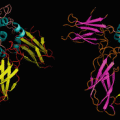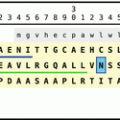and Winfried G. Rossmanith2
(1)
Lenzkirch, Germany
(2)
Ettlingen, Germany
9.1 The Three Steps of Hormone Regulation
To understand regulation of hormones, three steps have to be distinguished:
1.
Their synthesis
2.
Their release or secretion
3.
Their action on one or several receptors
We described hormone synthesis while presenting the different hormones: various enzymes by which protein/peptide hormones are correctly cleaved from their precursor or modulated posttranslationally; the two classes of cytochrome P450 (CYP )-dependent monooxygenases and hydroxysteroid dehydrogenases (HSD s), both generating steroids from cholesterol and the intermediates; and those enzymes by which tyrosine or tryptophan is converted into catecholamines, melatonin, or thyroid hormones.
Only steroid release is not blocked by the cell membrane, and steroids leave the synthesizing cell by diffusion. Their release is not deferred, but immediate. The other hormones are not released directly, but are stored in intracellular vesicles and are released on demand. Nerve cells and neurosecretory cells act in a similar way: neurotransmitters and neuropeptides as well as adrenaline and glycoprotein hormones are collected in secretory granules.
These secretory granules are usually located close to the cell surface. When a messenger demands release of a hormone by acting on a particular surface receptor, this ligand binding initiates an increase in intracellular calcium level, either by opening calcium channels or, more often, by release of calcium from intracellular calcium stores. This enhanced calcium level triggers fusion of the granules with the membrane. It has been known for only a short time that soluble N-ethylmaleimide sensitive factor attachment receptors (SNARE s) are required for this membrane fusion, by which action two surfaces usually rejecting each other come into contact and fuse (Jena 2004).When the membranes of the vesicle and cell fuse, the inside of the vesicle becomes the outside of the cell and the content of the vesicle is free to leave the cell.
Hormonal release from secretory granules is thus an active process. It is triggered extracellularly by neurotransmitters at synapses, and also by other endocrine or paracrine messengers. Many hormones are released in pulses. For this several cells have to fuse their granules to the cell membrane simultaneously. The regulation of gonadotropin-releasing hormone (GnRH) pulses, for example, is age dependent: postpartum, the GnRH release, which is high in the fetus, is downregulated to almost zero; therefore, luteinizing hormone (LH) and follicle-stimulating hormone (FSH) are hardly released. At puberty, GnRH release increases again. Although the release does not yet occur in steady pulses, mood swings occur in a parallel way. Once the pulse rate has been correctly set at the level of an adult, these mood swings mostly go. During aging, the pulse rate drops again.
Pulsatile GnRH release is required not only for female fertility, it is required for male fertility as well. If by external doses of GnRH or stable agonists a constantly elevated GnRH level is established, pituitary LH and FSH release is blocked and infertility occurs. This is one method of temporary contraception. However, in men constantly elevated GnRH levels maintain elevated testosterone levels, potentially triggering prostate carcinomas.
Stay updated, free articles. Join our Telegram channel

Full access? Get Clinical Tree






